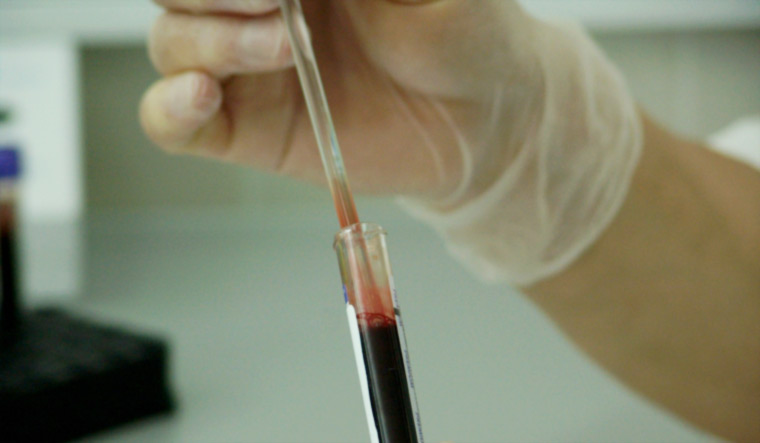The blood transfusion service in India is fragmented, decentralized and under the regulation of different governmental agencies, without regular monitoring. Therefore, the government’s commitment towards National Blood policy “to provide safe and adequate quantity of blood, blood components and blood products” appears far-fetched today.
In the current state of COVID-19 pandemic and the largest ever lockdown in the world, blood banks across India are facing shortages as well as uncertainty in demand of blood components due to postponement of elective surgeries. Demand for chronic transfusion recipients like patients with thalassemia, cancer and emergency interventions imposes a major burden on blood supply in such circumstances and the lack of centralized or consistent approach is exposing the flaws in our transfusion services. During these desperate times, we should not forget that data has revealed that 50% of transfusions in our country are inappropriate.
In countries like US, China, Australia and European nations, blood transfusion services consist of centralized network of blood centers which work in co-ordination with the storage centers and hospitals they cater to. This is backed by enabling legislations and continuous monitoring by professional bodies to ensure that there is consistency between demand and supply, which ensures minimal wastage of resources while also educating healthcare professionals and monitoring the appropriateness of clinical use of blood components.
The concept of Patient Blood Management (PBM) was endorsed in 2010 by the World Health Assembly through resolution WHA63.12. It is implemented as standard of care by the Australia, US and European Commission. Patient blood management (PBM) is the timely application of evidence-based medical concepts designed to maintain haemoglobin concentration, optimize haemostasis, and minimize blood loss, in an effort to improve patient outcomes. PBM helps in not only decreasing the overall demand for blood components, but also results in decreased hospital stay, healthcare expenditure and improve patient outcomes. PBM implementation at AIIMS Jodhpur resulted in a 65% decrease in PRBC in 2018-19 over the expected requirement based on the actual demand of the past 3 years.
The WHO Action Framework (2020-2023) to advance universal access to safe, effective and quality assured blood components lists the effective implementation of PBM as one of the six goals. In our country, the mushrooming and commercialisation of blood banks impedes its implementation as the smaller blood banks in the private sector may resort to dishonourable practices, in order to be financially viable. NACO assessment of blood banks in 2016 has shown the appalling status of many of these blood banks including the lack of component separation, trained staff and use of rapid diagnostic kits for screening for HIV, Hepatitis B and C which may not be optimal for screening donors.
Also Read
- 335 fresh Covid cases in India
- From polio to Covid-19: What we can learn from polio eradication for pandemic response
- Sudha Murty praises Vivek Agnihotri's 'The Vaccine War'
- China won't require COVID-19 testing for incoming travellers starting Wednesday
- North Korea to allow its citizens abroad to return home, a sign of further easing of pandemic curbs
The inefficiency of decentralized transfusion services compels the need for reforms in our country. Centralization will help in bringing coordination of blood banks with clear line of authority, responsibility and reliability of services. It will help in ensuring availability of quality blood products to all strata uniformly while planning in advance for future requirements. The Italian blood transfusion services responded to COVID-19 by increased blood donations in unaffected areas of the country which were then transferred to areas affected with COVID-19. Transfer of blood units between the centres can be done easily only when there is uniformity in preparation, testing and storage. A central processing unit equipped to process large number of samples will ensure that ELISA/ NAT can be done routinely to screen all donations to ensure reliability and uniformity. AIIMS Jodhpur is already acting as a centralized IDNAT testing facility in Rajasthan for the past one year for providing safe blood to thalassemic.
While new therapeutic options like gene therapy and medications need to be explored, the existing technologies to provide safe blood for thalassemics should also be considered in near term. While the screening tests for transfusion transmitted infections like HIV, Hepatitis B and C are done, there are a number of other diseases like Dengue, Cytomegalovirus, Epstein-Barr virus, HTLVs etc, as well as emerging diseases like COVID-19 may be cause of concern. This can be addressed by use of Pathogen Reduction Technologies (PRT) which inactivate these pathogens using chemicals, ultraviolet rays etc. wherever required and feasible.
Cost per unit for processing blood and testing for transfusion transmitted infections by using latest technologies like NAT and PRT will also decrease when done in bulk. The problem of logistics and ensuring temperature controlled transport facilities is not difficult to overcome as shown by the e commerce companies as well as our old yet proven dairy industry. The central government can give the responsibility to district level centralized blood bank to review the requirement, inappropriate transfusions and product wastage to ensure efficiency and cost effectiveness of government allocated funds.


